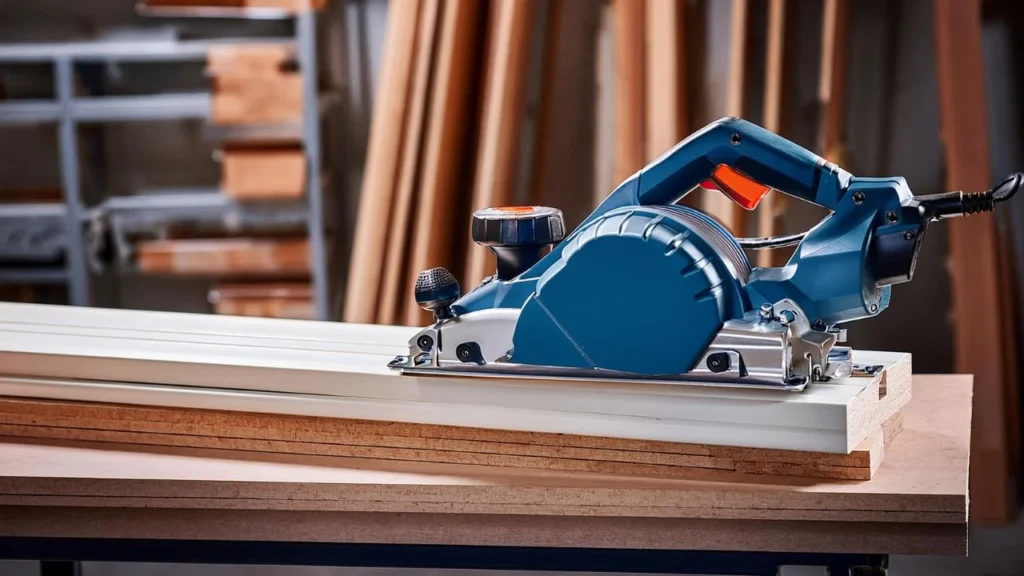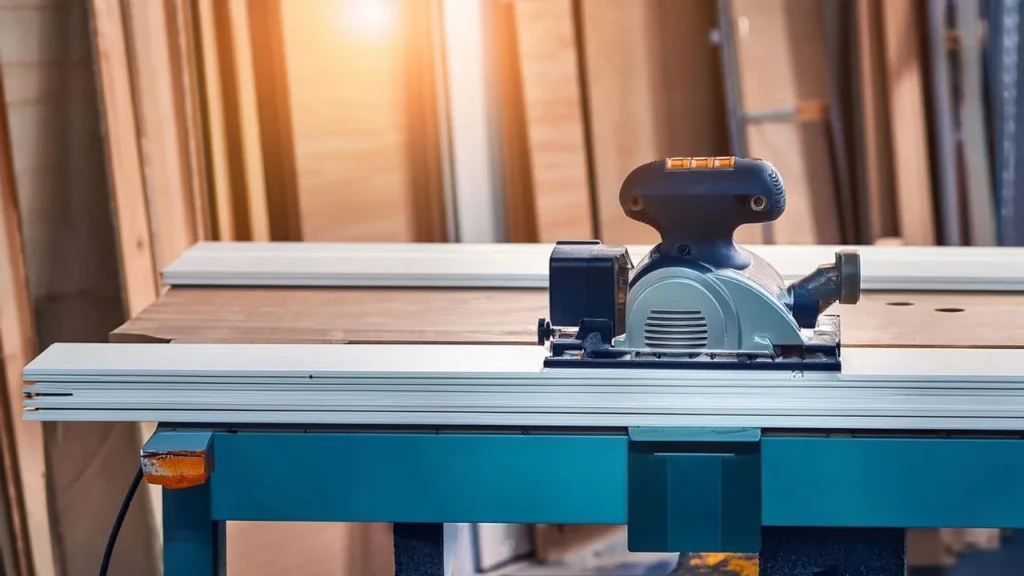PVC boards are a popular material for many DIY and construction projects. They’re durable, weather-resistant, and easy to work with. But what if you need to adjust the thickness of a PVC board? Can you use a thickness planer on it like you would with wood? Let’s find out.
What Is A PVC Board?
PVC stands for polyvinyl chloride. It’s a type of plastic that’s commonly used in pipes, window frames, fencing, and many other applications. PVC boards or sheets are flat pieces of this material. They come in various thicknesses and sizes.
PVC is valued for its strength, resistance to moisture and insects, and low maintenance requirements. It’s a go-to choice for outdoor projects or areas prone to water exposure. While similar to wood in some ways, PVC has unique properties that affect how it’s worked with.
Can You Use A Thickness Planer On PVC Boards?
Yes, you can thickness plane PVC boards – but it requires some special considerations and techniques. A thickness planer is designed to create an even thickness across a board. It works by feeding the board through a set of blades that shave off small amounts of material with each pass.

PVC reacts differently than wood when being planed. The main issue is that PVC tends to generate heat and can start to melt or gum up the planer blades if you’re not careful. This can ruin the PVC board and damage your planer.
To avoid these problems, the key is to take light, thin passes. Remove only a small amount of material with each pass through the planer. This gives the PVC time to cool between passes and prevents overheating. You may need to do more passes than you would with wood.
Another helpful tip is to use an anti-static spray on the PVC before running it through the planer. PVC tends to generate a lot of static electricity when machined, which can cause the chips to stick to everything and make a huge mess. Anti-static spray solves this issue.
While electric planers are most common, a manual hand plane is also an option for thickness planing PVC, especially for smaller adjustments. The slower pace and manual control can help prevent heat buildup. Just be sure to keep the blade very sharp.
Preparing To Plane PVC Boards
Before you start planing your PVC boards, there are a few things to keep in mind. PVC doesn’t handle heat very well, so it’s crucial to take steps to keep the planing process cool.
This means making thin passes with the planer to avoid generating too much heat, which could cause the PVC to melt or warp. Go slowly and steadily.
It’s a good idea to test your planing technique on some scrap PVC first. This will help you dial in the right planer settings and feed rate.
You’ll also want to take anti-static measures, like spraying the surrounding area with anti-static spray. This prevents the PVC chips and dust from clinging to everything.
With your planer and workspace prepped, you’re ready to start planing.
Step-by-Step Guide To Planing PVC Boards
Here’s how to go about thickness planing your PVC boards:

- Set your planer to make a very thin pass, around 1/32″ or less. Thin passes are key to prevent overheating the PVC.
- Feed the PVC board into the planer slowly and evenly. Don’t force it. Let the planer blades do the work at a steady pace.
- Inspect the PVC after the first pass. It should have a smooth, even surface without any melting or gumming.
- Continue making thin passes until you reach the desired thickness. Check the board frequently and adjust your pass depth as needed.
- If you’re using a handheld power planer, keep it moving steadily to avoid heat buildup in any one spot. Don’t allow the planer to linger.
- Once you’ve reached the right thickness, make a final smoothing pass at the shallowest setting. This will leave you with a clean, uniform surface.
With patience and attention, you can achieve great results planing PVC boards. But there are a few potential issues to watch out for.
Potential Issues While Planing PVC Board
The main challenge with planing PVC is avoiding heat buildup. PVC can start to melt at around 165 F, and the friction of planing can generate high temperatures.
So if you try to hog off too much material at once, or feed the PVC too quickly, you may see the plastic gumming up and sticking to the planer blades. This can ruin the surface and potentially damage your planer.
Dull planer blades can compound the heat issue. They won’t cut as efficiently, generating more friction. So always use sharp blades and replace them as needed.
You may also encounter some tear-out, especially when planing across the end grain of the PVC board. Light passes and a sacrificial backer board can help minimize this.
With hand planes, it can be tricky to take a very fine shaving. The PVC may tend to grab at the blade. A very sharp, finely-set blade is a must.
Tips For Planing PVC Board
Here are some final tips for success when thickness planing PVC boards:
- Secure the PVC board well to avoid shifting during planing
- Keep planer blades sharp for clean cuts and less heat generation
- Wear eye and breathing protection from the PVC dust generated
- Clean planer blades and surfaces immediately after use
- Sand planed PVC lightly for an extra-smooth surface
- Practice on scrap PVC first to get a feel for the right planing technique
Conclusion
So, you can thickness plane PVC boards, but it requires some care because PVC can get hot and start to melt if you’re not careful. To get good results, make thin passes, keep your blades sharp, and use anti-static spray to manage dust. With patience and attention to detail, you can successfully adjust the thickness of PVC boards and achieve a smooth finish for your projects.